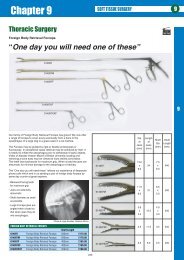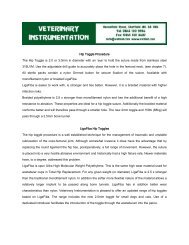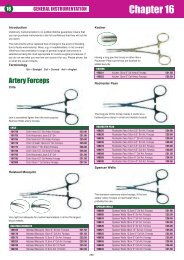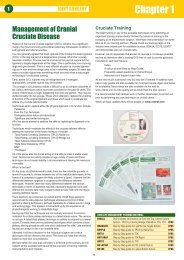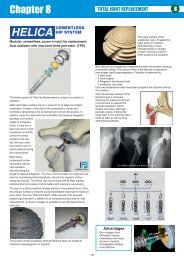Cardell MAX-12 HD - Veterinary Instrumentation
Cardell MAX-12 HD - Veterinary Instrumentation
Cardell MAX-12 HD - Veterinary Instrumentation
You also want an ePaper? Increase the reach of your titles
YUMPU automatically turns print PDFs into web optimized ePapers that Google loves.
CARDELL® <strong>MAX</strong>-<strong>12</strong><strong>HD</strong> User’s Manualsaline being sure that ALL air bubbles are removed. After filling, leave thestopcock open and “zero” the transducer to the machine by pressing the zerocontrol button on the monitor panel. This adjusts the electronics to provideaccurate measurement. This step will be repeated after patient attachmentoccurs. After filling and zeroing the transducer, a flush infusion device isattached to one stopcock unless it is embedded in the transducer device. AnIV bag with heparinzed saline is placed in a pressure sleeve and an IV infusionset (microdrip) is attached to the flush device and the bag pressurized to 300mm Hg. A 6-<strong>12</strong>” length of low compliance IV tubing is attached to a stopcockto interface the catheter to the transducer. This tubing is flushed and filled withheparinzed saline. The stopcock is turned off to prevent fluid drainage once thetubing is filled. A catheter adapter with a side port is flushed with heparinizedsaline filled syringe with the syringe attached after flushing. The catheter,catheter supplies, and prep solution are assembled and organized on a worksurface for easy access.Catheter placement sites: A superficial artery amenable to catheter placementis identified. Reported sites for arterial catheter placement in dogs and catsinclude the dorsal pedal, metatarsal, popliteal and femoral arteries in the hindlimb and the brachial artery in the forelimb. In general, distal rear limb sites areselected based on ease of identification, catheter placement, and stabilizationfollowing catheter insertion. The selected site must be clipped and surgicallyprepped prior to catheter placement. Failure to aseptically prepare the area canlead to systemic infection.Catheterization technique: The artery is palpated for pulse quality. Inhypotensive patients, peripheral arterial sites may not be detectable due to lowblood flow and poor pulse quality. Following identification, a small amount of2% lidocaine is infiltrated in proximity to the vessel to reduce vasospasm anddesensitize the area for catheter placement. Do not remove the filter cap fromthe needle hub prior to placement. You will be entering a high pressure vesseland will have a sudden burst of blood back through the catheter hub if it isuncovered. The catheter is initially introduced through the skin. In some cases,a pilot wound is created if skin is tough and may damage initial catheterinsertion. Once the catheter is inserted through the skin, it is SLOWLYadvanced while a finger is kept over the artery to “feel” when the catheterintersects the vessel. You can feel the vessel wall because it is a muscularM1.0 5-15-09<strong>12</strong>5



